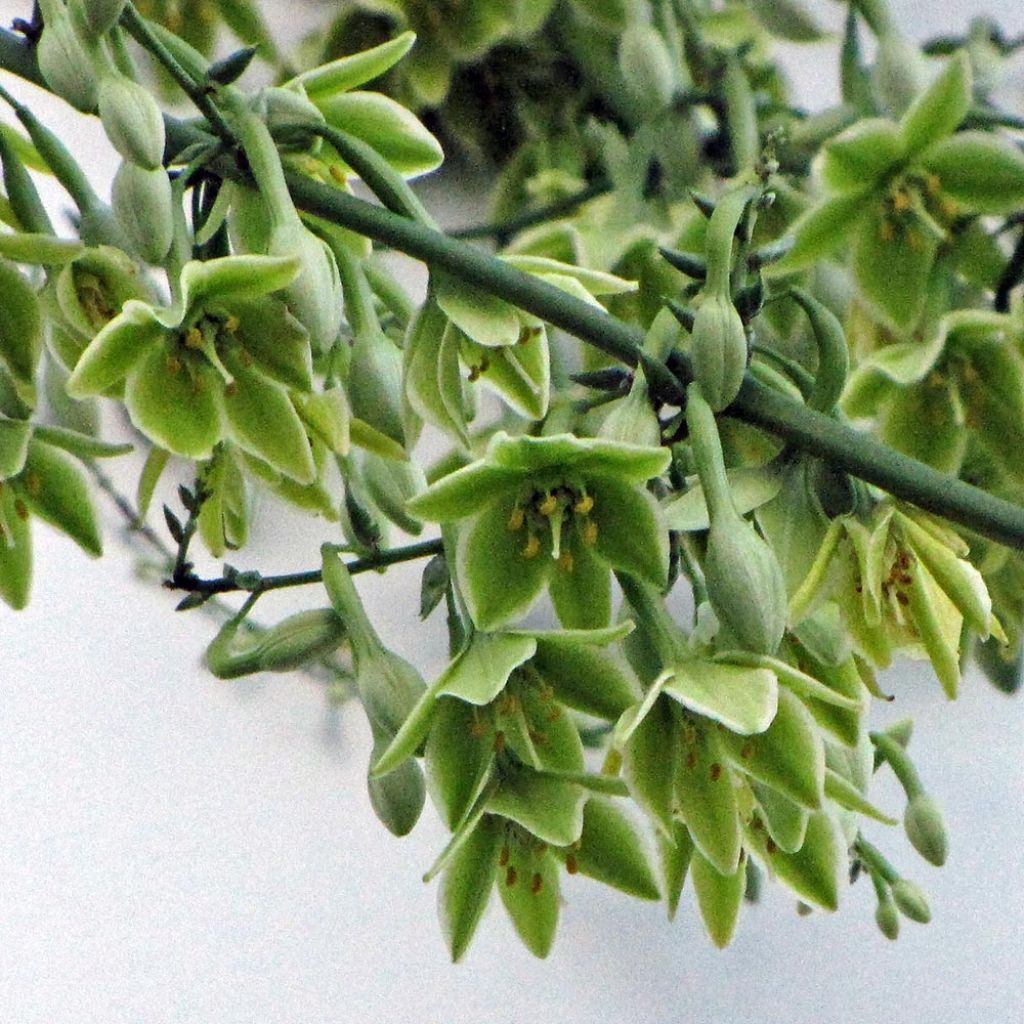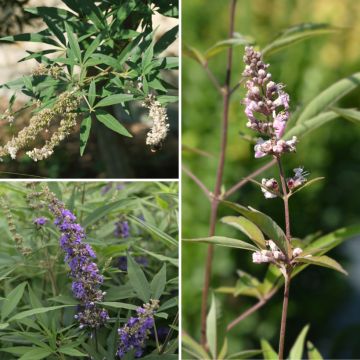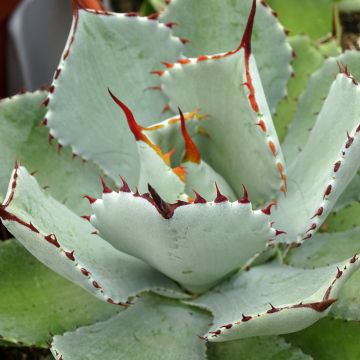

Furcraea bedinghausii


Furcraea bedinghausii
Furcraea bedinghausii
Furcraea bedinghausii
Bedinghaus' Dracaena, Mexican Starburst
Special offer!
Receive a €20 voucher for any order over €90 (excluding delivery costs, credit notes, and plastic-free options)!
1- Add your favorite plants to your cart.
2- Once you have reached €90, confirm your order (you can even choose the delivery date!).
3- As soon as your order is shipped, you will receive an email containing your voucher code, valid for 3 months (90 days).
Your voucher is unique and can only be used once, for any order with a minimum value of €20, excluding delivery costs.
Can be combined with other current offers, non-divisible and non-refundable.
Why not try an alternative variety in stock?
View all →This plant carries a 24 months recovery warranty
More information
We guarantee the quality of our plants for a full growing cycle, and will replace at our expense any plant that fails to recover under normal climatic and planting conditions.
Would this plant suit my garden?
Set up your Plantfit profile →
Description
The Furcraea bedinghausii, sometimes called Bedinghaus' Dracaena or Mexican Starburst, is one of those extraordinary plants from semi-desert areas of North America, related to Yuccas and agaves. With a highly exotic appearance, but relatively hardy, this beautiful species forms a crown of large succulent leaves of a beautiful gray-green blue color, and develops a trunk after several years. The flowering, powerful and spectacular, marks the end of its life, but the plant perpetuates itself through small bulbils produced on the flower stalks that will germinate when they fall to the ground. This relatively hardy species will bring an exotic color to your garden. In mild climates, reserve a prime location for it in a dry garden or at the center of a large rockery, it deserves it!
Originating from the volcanic slopes of central and southern Mexico, Furcraea bedinghausii can withstand short frosts of around -10°C (14 °F) in dry soil, and summer drought. It is a slow-growing plant from the agave or asparagus family. When young, Furcraea bedinghausii forms a basal tuft composed of large, wide, fleshy, slightly trailing leaves with dentate edges, but not spiny. Each leaf can measure up to 1.5 m (4 ft 11 in) long and 10 cm (3.9 in) wide on an adult plant. After many years, it can form a trunk 2 m (6 ft 7 in) tall and 30 cm (11.8 in) in diameter, covered with a 'skirt' of dry leaves that eventually fall off. This trunk carries a large crown of leaves 1m (3 ft 4 in) to 1.50m (4 ft 11 in) wide, composed of a multitude of flexible and slightly trailing leaves. Flowering occurs after 15 to 20 years of cultivation, from May to July in Europe, signifying the death of this semelparous plant. In this species, the inflorescence can rise up to 4 or 5 m (13 ft 1 in or 16 ft 5 in) from the ground. It develops into a large, pyramid-shaped and ramified panicle. The tubular and villous flowers, opening up like 5.5 cm (2.2 in) wide stars, are white tinged with light yellow and green, and have a waxy texture. At the axil of the flowers, bulbils develop which are true little Furcraea in the making. These bulbils take root when they come into contact with a sandy soil kept moist.
Furcraea bedinghausii requires a lot of sun and very well-drained, even poor and dry soil, and tolerates seaside conditions perfectly. It particularly struggles with heavy and waterlogged soils in winter. In mild regions, it will find its place on a large dry slope, at the center of an exotic or contemporary rockery, or even near a swimming pool, if the soil is well prepared to accommodate it. This large plant will simply be magnificent when isolated, accompanied by a carpet of ceraistes, Cerastostigma plumbaginoides, Delosperma or even a short grass meadow of Zoyzia tenuifolia, the Mascarene grass. It can also be partnered with agaves, phormiums, Hesperaloe parviflora, Beschorneria yuccoides, all equally spectacular and frugal. It can also be planted in a very large container on the terrace. Carefully choose the most sheltered place from winter rains, in full sun.
Report an error about the product description
Furcraea bedinghausii in pictures






Plant habit
Flowering
Foliage
Botanical data
Furcraea
bedinghausii
Agavaceae (Asparagaceae)
Bedinghaus' Dracaena, Mexican Starburst
North America
Other Shrubs A to Z
View all →Planting and care
Plant Furcraea bedinghausii in spring, in a very sunny location and sheltered from winter rains if your garden is in a borderline hardiness zone. An adult specimen will withstand brief freezes of around -10°C (14 °F) if the soil is dry in winter. Its growth is quite slow, it will be boosted by generous but spaced waterings in summer and a light soil enriched with leaf compost. In mild climates, prefer planting in early autumn, especially in hot and dry climates. This species fears heavy and clay-rich soils and humidity, especially when combined with cold weather: plant it in a well-drained soil, ideally in a large rockery, a raised bed with gravel-enriched soil, or a rocky slope. However, it is not very demanding regarding soil pH, which can be slightly acidic, sandy, rocky, or even slightly limestone. It tolerates poor soil, but its growth will be slightly faster in a somewhat fertile soil. Monitor watering during the first 2 years, especially in hot and dry periods. The plant dies after flowering, having produced numerous bulblets at the axils of the flowers: simply collect and replant them to obtain new plants. Note that this Furcraea is perfectly tolerant to sea spray and coastal conditions.
Planting period
Intended location
Care
This item has not been reviewed yet - be the first to leave a review about it.
Similar products
Haven't found what you were looking for?
Hardiness is the lowest winter temperature a plant can endure without suffering serious damage or even dying. However, hardiness is affected by location (a sheltered area, such as a patio), protection (winter cover) and soil type (hardiness is improved by well-drained soil).

Photo Sharing Terms & Conditions
In order to encourage gardeners to interact and share their experiences, Promesse de fleurs offers various media enabling content to be uploaded onto its Site - in particular via the ‘Photo sharing’ module.
The User agrees to refrain from:
- Posting any content that is illegal, prejudicial, insulting, racist, inciteful to hatred, revisionist, contrary to public decency, that infringes on privacy or on the privacy rights of third parties, in particular the publicity rights of persons and goods, intellectual property rights, or the right to privacy.
- Submitting content on behalf of a third party;
- Impersonate the identity of a third party and/or publish any personal information about a third party;
In general, the User undertakes to refrain from any unethical behaviour.
All Content (in particular text, comments, files, images, photos, videos, creative works, etc.), which may be subject to property or intellectual property rights, image or other private rights, shall remain the property of the User, subject to the limited rights granted by the terms of the licence granted by Promesse de fleurs as stated below. Users are at liberty to publish or not to publish such Content on the Site, notably via the ‘Photo Sharing’ facility, and accept that this Content shall be made public and freely accessible, notably on the Internet.
Users further acknowledge, undertake to have ,and guarantee that they hold all necessary rights and permissions to publish such material on the Site, in particular with regard to the legislation in force pertaining to any privacy, property, intellectual property, image, or contractual rights, or rights of any other nature. By publishing such Content on the Site, Users acknowledge accepting full liability as publishers of the Content within the meaning of the law, and grant Promesse de fleurs, free of charge, an inclusive, worldwide licence for the said Content for the entire duration of its publication, including all reproduction, representation, up/downloading, displaying, performing, transmission, and storage rights.
Users also grant permission for their name to be linked to the Content and accept that this link may not always be made available.
By engaging in posting material, Users consent to their Content becoming automatically accessible on the Internet, in particular on other sites and/or blogs and/or web pages of the Promesse de fleurs site, including in particular social pages and the Promesse de fleurs catalogue.
Users may secure the removal of entrusted content free of charge by issuing a simple request via our contact form.
The flowering period indicated on our website applies to countries and regions located in USDA zone 8 (France, the United Kingdom, Ireland, the Netherlands, etc.)
It will vary according to where you live:
- In zones 9 to 10 (Italy, Spain, Greece, etc.), flowering will occur about 2 to 4 weeks earlier.
- In zones 6 to 7 (Germany, Poland, Slovenia, and lower mountainous regions), flowering will be delayed by 2 to 3 weeks.
- In zone 5 (Central Europe, Scandinavia), blooming will be delayed by 3 to 5 weeks.
In temperate climates, pruning of spring-flowering shrubs (forsythia, spireas, etc.) should be done just after flowering.
Pruning of summer-flowering shrubs (Indian Lilac, Perovskia, etc.) can be done in winter or spring.
In cold regions as well as with frost-sensitive plants, avoid pruning too early when severe frosts may still occur.
The planting period indicated on our website applies to countries and regions located in USDA zone 8 (France, United Kingdom, Ireland, Netherlands).
It will vary according to where you live:
- In Mediterranean zones (Marseille, Madrid, Milan, etc.), autumn and winter are the best planting periods.
- In continental zones (Strasbourg, Munich, Vienna, etc.), delay planting by 2 to 3 weeks in spring and bring it forward by 2 to 4 weeks in autumn.
- In mountainous regions (the Alps, Pyrenees, Carpathians, etc.), it is best to plant in late spring (May-June) or late summer (August-September).
The harvesting period indicated on our website applies to countries and regions in USDA zone 8 (France, England, Ireland, the Netherlands).
In colder areas (Scandinavia, Poland, Austria...) fruit and vegetable harvests are likely to be delayed by 3-4 weeks.
In warmer areas (Italy, Spain, Greece, etc.), harvesting will probably take place earlier, depending on weather conditions.
The sowing periods indicated on our website apply to countries and regions within USDA Zone 8 (France, UK, Ireland, Netherlands).
In colder areas (Scandinavia, Poland, Austria...), delay any outdoor sowing by 3-4 weeks, or sow under glass.
In warmer climes (Italy, Spain, Greece, etc.), bring outdoor sowing forward by a few weeks.




























































